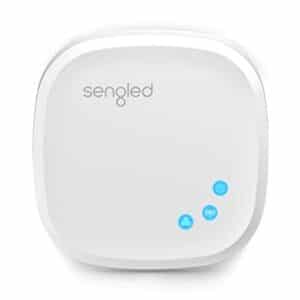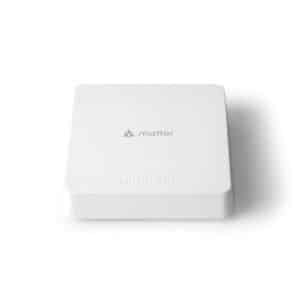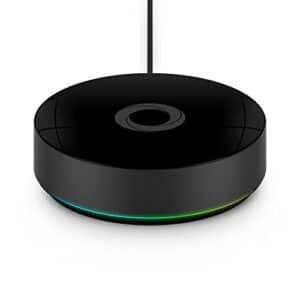How Do Smart Home Hubs Work?
Key Takeaways
- A smart home hub connects and controls various smart devices within the home
- Smart home hubs use wireless communication protocols such as Wi-Fi, Bluetooth, Zigbee, Z-Wave, and Thread
- Smart home hubs offer centralized control, local control, compatibility with smart devices, enhanced automation and customization, and a stable internet connection
Smart home hubs have become increasingly popular as more people embrace home automation and the Internet of Things (IoT). But how exactly do these hubs work? In this article, we will explore the ins and outs of smart home hubs, their functionalities, and why they are considered the central brain of a smart home.
What is a Smart Home Hub?
A smart home hub is a device that connects and controls various smart devices within the home. These devices can include lights, locks, thermostats, cameras, and more. The hub acts as a bridge between these devices, enabling communication and integration.
Wireless Communication Protocols
Smart home hubs use wireless communication protocols to connect and communicate with different devices. The most common protocols include Wi-Fi, Bluetooth, Zigbee, Z-Wave, and Thread. Each protocol has its own advantages and compatibility with different devices.
Wi-Fi
Wi-Fi is the most widely used wireless protocol in homes today. It allows devices to connect to the internet and communicate with each other. Most smart devices, such as smart speakers and smart thermostats, support Wi-Fi connectivity.
Bluetooth
Bluetooth is another popular wireless protocol used in smart home devices. It enables short-range communication between devices, typically within a range of 30-100 feet. Bluetooth is commonly used for devices like smart locks, speakers, and sensors.
Zigbee and Z-Wave
Zigbee and Z-Wave are low-power wireless protocols designed specifically for home automation. They operate on different frequencies and are used for connecting devices that are farther away from the hub. These protocols are commonly found in devices like smart lights, sensors, and door locks.
Thread
Thread is a newer wireless protocol that is gaining popularity in the smart home industry. It is designed to provide reliable and secure connectivity for devices, especially those that require low latency and high bandwidth. Thread is used in devices like smart thermostats and security systems.
Centralized Control and Integration
One of the key benefits of using a smart home hub is its ability to centralize and integrate all smart devices. With a hub, you can control multiple devices from different manufacturers using a single app. This eliminates the need for multiple apps and simplifies the management of your smart home.
Local Control and Security
Smart home hubs offer local control, which means your devices and data stay on your local network. This provides better security and faster response times compared to cloud-based systems. With local control, you don’t have to worry about your data being stored in the cloud or being accessed by third parties.
Compatibility with Smart Devices
Smart home hubs are generally compatible with a wide range of smart devices. They can connect to various devices such as lights, locks, garage door openers, thermostats, cameras, and more. The compatibility may vary depending on the type of hub and the protocols it supports.
Enhanced Automation and Customization
Smart home hubs enable the creation of routines and advanced automation features, making your smart home more efficient and convenient. You can set up routines to automatically turn on lights when you arrive home, adjust the thermostat based on your preferences, or even schedule your coffee maker to start brewing in the morning.
Stable Internet Connection
Some smart home hubs provide a more stable internet connection for your smart home through ethernet. This can be especially useful if you have a large number of devices that rely on a stable internet connection for optimal performance.
The Future of Smart Home Hubs
As the smart home industry continues to evolve, the compatibility and interoperability of smart home hubs are becoming increasingly important. The introduction of the Matter standard aims to ensure interoperability between devices and platforms, allowing for seamless integration and control of smart devices from different manufacturers.
Related Websites:
FAQs:
Q: What is a smart home hub and why should I understand how it works?
A smart home hub is a central device that connects and controls various smart devices in your home. Understanding how it works is important because it allows you to fully utilize the capabilities of your smart home setup and enjoy the convenience and efficiency it offers.
Q: How do smart home hubs connect devices?
Smart home hubs connect devices using various communication protocols such as Wi-Fi, Bluetooth, Zigbee, and Z-Wave. These protocols enable hubs to communicate and control different smart devices, ensuring seamless integration and operation.
Q: How do smart home hubs control devices?
Smart home hubs act as central command centers, allowing you to send and receive commands to control devices. You can control devices through voice integration, mobile apps, and even manual control using physical buttons on the hub itself.
Q: How do smart home hubs automate tasks?
Smart home hubs enable automation by allowing you to program routines or schedules. You can create schedules for devices to turn on and off at specific times, set up triggers and conditions to automate specific actions, and even integrate with other smart devices to create seamless automation scenarios.
Q: How do smart home hubs enhance security and privacy?
Smart home hubs address security and privacy concerns by implementing encryption and authentication protocols to secure communication between devices. They also offer options for local processing instead of relying on cloud-based processing, providing better control over data privacy. Additionally, user access control and permissions ensure that only authorized individuals can access and control the smart home system.






